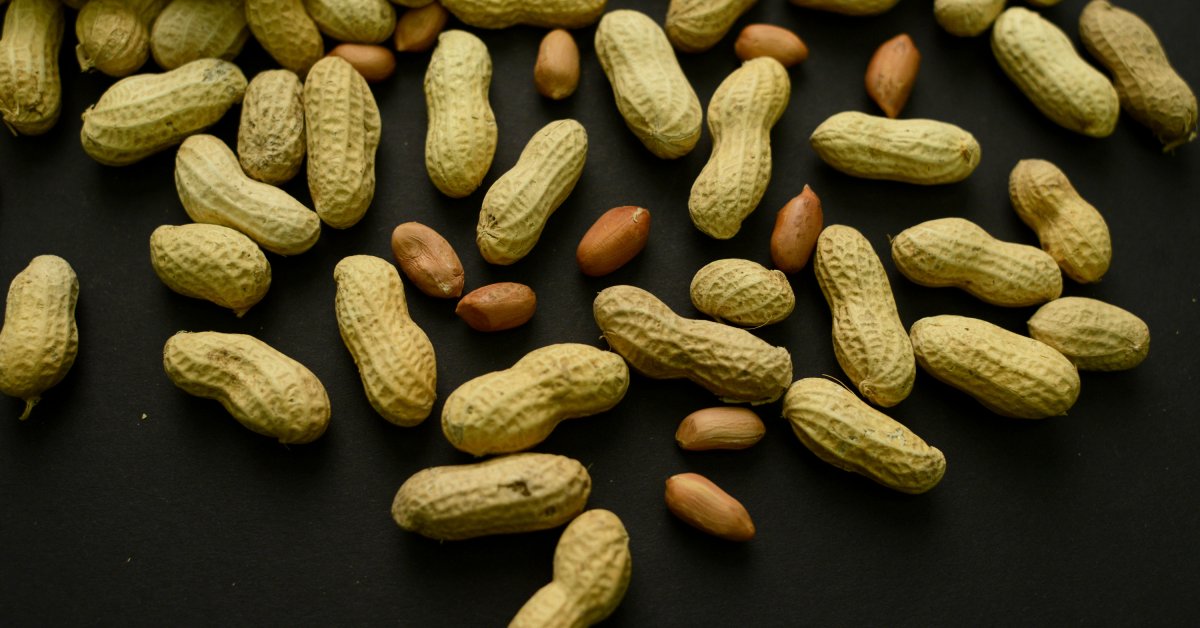
WASHINGTON — An experimental pores and skin patch is displaying promise to deal with toddlers who’re extremely allergic to peanuts—coaching their our bodies to deal with an unintended chunk.
Peanut allergy is among the commonest and harmful meals allergy symptoms. Dad and mom of allergic tots are continuously on guard towards exposures that may flip birthday events and play dates into emergency room visits.
There is no such thing as a treatment. The one remedy is for kids Four and older who can eat a particular peanut powder to guard towards a extreme response.
The patch, named Viaskin, goals to ship that form of remedy by the pores and skin as an alternative. In a serious check with children ages 1 to three, it helped those that couldn’t tolerate even a small fraction of a peanut to finally safely eat a couple of, researchers reported Wednesday.
If extra testing pans out, “this is able to fill an enormous unmet want,” mentioned Dr. Matthew Greenhawt, an allergist at Kids’s Hospital Colorado who helped lead the examine.
About 2% of U.S. kids are allergic to peanuts, some so severely than even a tiny quantity could cause a life-threatening response. Their immune system overreacts to peanut-containing meals, triggering an inflammatory cascade that causes hives, wheezing or worse. Some children outgrow the allergy however most should keep away from peanuts for all times and carry rescue drugs to stave off a extreme response in the event that they by accident ingest some.
In 2020, the Meals and Drug Administration authorised the primary remedy to induce tolerance to peanuts—an “oral immunotherapy” named Palforzia that kids ages Four to 17 eat each day to maintain up the safety. Aimmune Therapeutics’ Palforzia is also being examined in toddlers.
France’s DBV Applied sciences is pursuing skin-based immunotherapy as a substitute technique to desensitize the physique to allergens.
The Viaskin patch is coated with a small quantity of peanut protein that’s absorbed into the pores and skin. A each day patch is worn between the shoulder blades, the place toddlers can’t pull it off.
Within the new examine, 362 toddlers with peanut allergy first have been examined to see how excessive a dose of peanut protein they may tolerate. Then they have been randomly assigned to make use of the Viaskin patch or a lookalike dummy patch day by day.
After a yr of remedy, they have been examined once more and about two-thirds of the toddlers who used the true patch may safely ingest extra peanuts, the equal of three to 4, researchers concluded.
That compares to a few third of kids given the dummy patches. Greenhawt mentioned they seemingly embrace kids who’re outgrowing the allergy.
As for security, 4 Viaskin recipients skilled an allergic response known as anaphylaxis that was deemed associated to the patch. Three have been handled with epinephrine to calm the response, and one dropped out of the examine.
Some children additionally by accident ate peanut-containing meals in the course of the examine, and researchers mentioned allergic reactions have been much less frequent among the many Viaskin customers than these carrying the dummy patches. The most typical facet impact was pores and skin irritation on the patch website.
The findings have been printed within the New England Journal of Medication.
The outcomes “are excellent information for toddlers and their households as the following step towards a future with extra remedies for meals allergy symptoms,” Dr. Alkis Togias of the Nationwide Institutes of Well being, which wasn’t concerned with the examine, wrote in an accompanying editorial.
Togias cautioned that it’s too early to match oral and pores and skin remedies, however pointed to knowledge suggesting every might need totally different execs and cons—elevating the chance that oral remedy could be stronger but additionally trigger extra unwanted side effects.
DBV Applied sciences has struggled for a number of years to carry the peanut patch to market. Final month the corporate introduced the FDA desires some extra security knowledge for toddlers, and a separate examine already is monitoring longer remedy. A examine of 4- to 7-year-olds is also underway.
Extra Should-Reads From TIME



